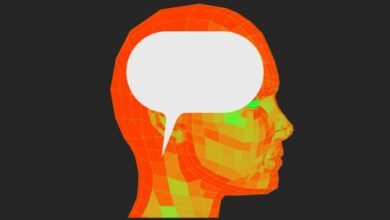
The rise of reasoning AI models represents a pivotal moment in the development of artificial intelligence. Unlike traditional generative models, reasoning AI seeks to mimic human-like logical thinking, promising to address some of the most pressing limitations in AI today. OpenAI’s o1 model has led the charge, sparking a competitive response from major players like DeepSeek and Alibaba. But as the industry dives into this “reasoning renaissance,” questions linger about whether these advancements are as transformative as they seem,or whether they introduce new challenges that outweigh their potential benefits.
The Case for Reasoning AI Models
Traditional AI systems have set benchmarks in tasks like text generation, translation, and conversational capabilities. Yet, they often falter when faced with problems requiring logical deductions, multi-step reasoning, or complex strategies. Enter reasoning AI models, designed not only to perform tasks but to “think” about them.
Sam Altman, CEO of OpenAI, has championed the o3 model as “the smartest model in the world,” emphasizing its ability to work through complex problems step by step. The model employs “chain of thought” reasoning, simulating human-like processes to deliberate before delivering results. Altman explains, “We’ve reached a stage where models need to do more than generate text, they need to think critically and adapt to nuanced scenarios.”
This evolution is more than a technological feat; it’s a market necessity. With the global AI industry valued at $196 billion in 2023 and projected to soar to $1.81 trillion by 2030, competition has reached fever pitch. Companies are under relentless pressure to innovate, and reasoning AI is emerging as the next frontier.
The Driving Forces of Innovation
The rise of reasoning AI models is driven by three interconnected factors.
First, generative models are hitting their limits. For years, scaling the process of increasing the size and parameters of AI models, was the go-to strategy for achieving better performance. But this approach has yielded diminishing returns. While these models excel in fluency and creativity, they often fail at deeper comprehension tasks. This plateau has fueled the search for smarter, more efficient systems.
Second, market dynamics play a crucial role. With AI being central to industries ranging from healthcare to finance, the stakes for innovation have never been higher. Jensen Huang, CEO of Nvidia, underscores this urgency, noting, “Reasoning AI is about taking the next big leap. It’s no longer just about generating responses; it’s about achieving long-term accuracy and understanding.”
Finally, advancements in AI research have laid the groundwork for reasoning models. Techniques like self-reflection loops and chain-of-thought reasoning allow these models to break tasks into manageable steps, check their own work, and refine their outputs – a stark contrast to the more linear approach of earlier systems.
Latest Advances in Reasoning AI
Recent releases have significantly raised the bar in reasoning capabilities. OpenAI’s o3 model, lauded as “the smartest model in the world“, exemplifies this trend with its enhanced logical processing and problem-solving skills. According to Sam Altman, “o3 has redefined how AI approaches multi-step reasoning, making it more adaptable and precise in addressing complex tasks.“
Meanwhile, Google DeepMind unveiled Gemini 2.0 Flash Thinking, emphasizing the importance of transparency. Jeff Dean, Chief Scientist at Google DeepMind, described the innovation as a way to “explicitly show the model’s thoughts,” fostering user trust and clearer decision-making processes.
These advancements underscore a shared focus across the industry: integrating reasoning as a core functionality to expand AI’s potential beyond conventional applications.
Challenges on the Horizon
Despite their potential, reasoning AI models face significant hurdles. One major concern is their resource intensity. These models require immense computational power to perform iterative reasoning processes, making them costly to develop and operate. OpenAI’s o1 pro mode, for instance, costs $2,400 annually,a steep price that reflects the heavy demands of such systems.
Critics argue that these costs aren’t just financial but environmental. The energy consumption of large AI systems is a growing concern in an era of climate awareness. As Jensen Huang puts it, “While reasoning AI might bring us closer to human-like cognition, it also pushes us further into the realm of unsustainable practices if not addressed responsibly.”
Transparency is another challenge. Many leading labs, including OpenAI, maintain a degree of secrecy around the inner workings of their models. This lack of openness can hinder collaboration and slow broader advancements in the field. Guy Van Den Broeck, a professor at UCLA, warns, “Secrecy may protect competitive interests, but it comes at the expense of trust and progress. We need a shared framework to ensure these tools are developed ethically and effectively.”
Performance inconsistencies also temper the optimism surrounding reasoning AI. Costa Huang from Ai2 highlights the limitations of models like o1, pointing out their struggles with seemingly straightforward tasks like arithmetic. “These systems excel in specialized domains,” Huang explains, “but they are far from being universally reliable.”
Expert Voices: Mixed Reactions
The introduction of reasoning AI has sparked spirited debates within the tech community. While some hail these models as a groundbreaking evolution, others urge caution.

Ilya Sutskever, co-founder of OpenAI, envisions a future where reasoning AI transforms how we interact with technology. “The ability to reason through countless possibilities is both the greatest strength and the greatest challenge of these models,” he says. Sutskever acknowledges that as AI systems grow more sophisticated, their outputs may become less predictable, raising questions about their reliability and safety.
Meanwhile, skeptics like Ameet Talwalkar, a professor specializing in machine learning, caution against being swept up in the hype. “The claims around reasoning AI are impressive, but we need to see consistent, tangible results before celebrating this as the next big thing,” Talwalkar advises.
Exploring the Reasoning Renaissance
The future of reasoning AI hinges on the ability of researchers, companies, and policymakers to address these challenges head-on. Transparency, collaboration, and sustainability must underpin the development of these systems to maximize their benefits while minimizing potential harms.
Jensen Huang believes the path forward lies in “long thinking”, a deliberate, thoughtful approach to AI development. “This isn’t a race,” he asserts. “It’s about getting it right.”
For reasoning AI to fulfill its promise, it must move beyond niche applications and demonstrate its value across diverse domains. Guy Van Den Broeck stresses the importance of generalizability: “True reasoning isn’t about solving isolated problems; it’s about applying logic universally, across scenarios we haven’t even imagined yet.”
At the same time, ethical considerations cannot be an afterthought. As Costa Huang notes, “We’re building systems that could shape decision-making in critical areas. The responsibility is immense, and the margin for error is slim.”
A Balanced Perspective
The rise of reasoning AI is as much a cultural shift as it is a technological one. It reflects humanity’s aspiration to replicate its own thought processes in machines, pushing the boundaries of what AI can achieve. But this ambition comes with risks.
The reasoning renaissance is still in its early stages, and its trajectory remains uncertain. Whether these models represent a leap forward or a step too far depends on how the industry navigates the challenges ahead. As Sam Altman aptly puts it, “We’re standing on the edge of something extraordinary. But we must tread carefully, for the implications are as vast as the potential.”
Reasoning AI models may not yet be perfect, but their rise signals an exciting – and challenging – new chapter in the story of artificial intelligence.






